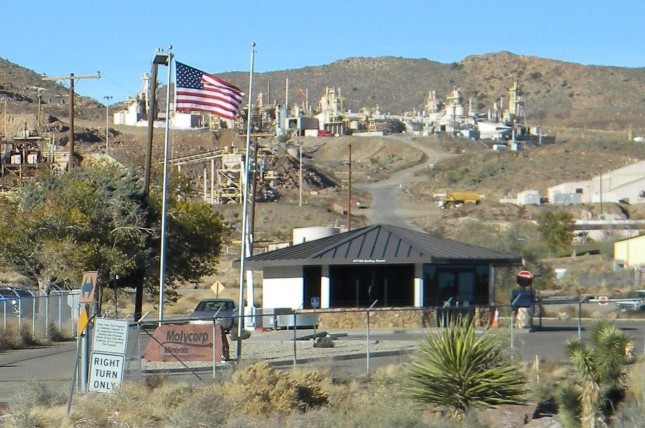-
China vs. United States: Competition Over Rare Minerals Ratchets Up
October 15, 2018 By Olivia Smith
“Historically, resource conflicts have often centered on fuel minerals, like oil. Future resources conflicts may however focus more on competition for non-fuel minerals that enable [modern] technologies,” said Andrew Gulley, Mineral Economist at the United States Geological Survey. America’s 2018 National Defense Strategy says that great power competition is the country’s most important defense challenge. Its key competitor for resources is China. Gulley was among several experts gathered at New America on September 20 to discuss the new competitive space and prospects for conflict or cooperation.
The United States has historically been the largest economy with correspondingly high natural resource consumption. However, Chinese consumption is catching up. Both countries are expected to increase their natural resource demand, particularly for minerals used in new technologies. Yet growth in global demand will exert pressure on already tight supplies. Consequently, countries must focus on resource security. The new competitive space for great powers centers on the production of minerals and ensuring adequate supplies.
Perhaps the most likely arena for U.S.-China competition is minerals. Rare minerals make our modern, information-age economy possible. Most technology across civil and military sectors depends on them. A common example is the smartphone, with components from around the world. Another is sonar that the military uses. Rare minerals are fundamental components of the renewable energy revolution. Rare and precious elements like cobalt and silver make up photovoltaic cells and lithium ion batteries for electric vehicles.
Rare minerals are a foreign policy issue around the world, since no country can domestically supply all of the rare minerals it needs. “In terms of delineating the competitive space, it is interesting to compare net import reliance,” said Gulley. Net import reliance measures how much of a country’s domestic consumption is fulfilled through imports. China has the comparative advantage over the United States where 13 minerals are concerned. Furthermore, China is a leading supplier to the United States for 9 of these. In contrast, America has the upper hand with 8 minerals, but is only a dominant producer of one. The United States leads in beryllium production, thanks to an act of Congress that ensured a secure domestic supply.
“The new competitive space may prove most contentious for 11 minerals for which China and the US are both highly import-reliant on foreign sources of production,” said Gulley. “Geographically, the largest producing countries of the 11 minerals are the DRC, Rwanda, South Africa, Chile and Brazil,” he said. These five countries are now a key theater of great power competition as China and America seek to secure supplies.
“These minerals are critical to the information-age economy,” noted Sharon Burke, and they are key inputs for “everything that drives the current modern economy and modern militaries.” “The next war is going to be about high tech,” she said, and that depends on these rare minerals from the DRC, Rwanda, South Africa, Chile and Brazil. “So five countries, that’s the competitive space.”
Read more:
- Green energy’s reliance on rare minerals risks exacerbating conflict in fragile states, but ethical sourcing obligations may help.
- The Deep Sea becomes a theater of competition as countries struggle for tough-to-obtain resources.
- America’s competition with China heats up with friction over resources in the South China Sea.
- A section of the Dodd-Frank Act aimed to combat trade in conflict minerals. Was using U.S. law appropriate?
Source: U.S. National Defense Strategy
Photo Credit: Molycorp rare-earth mine and processing facilities – Mountain Pass, California, USA, November 2010. Courtesy of Wikimedia Commons user AlanM1.
Topics: China, conflict, consumption, economics, environment, featured, minerals, natural resources, On the Beat, security, U.S.
 A Publication of the Stimson Center.
A Publication of the Stimson Center.



